Hyderabad: On a hot midweek morning, an unlikely group of doctors, politicians, and conservationists gathered in a small room for almost three hours to angrily argue about the future of a 100-year-old building — the Osmania General Hospital in Hyderabad. It quickly disintegrated into bedlam.
Demolish or restore is the oldest debate in the world when it comes to heritage structures. And for the last 10 years, Hyderabad has been going back and forth on what to do with the Indo-Saracenic Osmania hospital on the banks of the Musi River.
The beautiful building is structurally sound but badly neglected, with many claiming that such a structure is a public hazard, which shouldn’t be used to treat sick people. Everybody has an opinion. Historians, heritage activists, residents, politicians, and government officials to the Telangana High Court have argued the matter threadbare so far.
One group present at the public meeting believes the indelible imprint of Old Hyderabad’s skyline should be demolished, and a new hospital built in its place. Another group believes that the heritage part of the hospital should be conserved, and a new one should be built around it. Some who want the old building to be conserved want a new hospital to be built in an entirely different location. None of them see eye-to-eye.
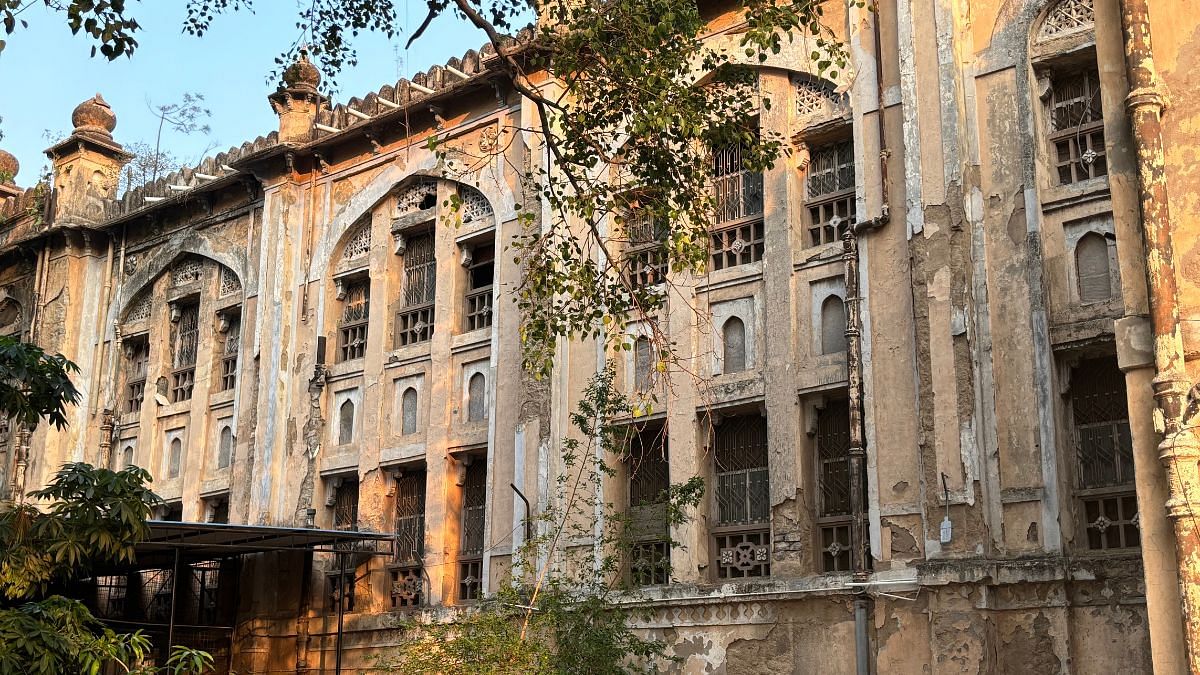
The main decision rests with the Telangana High Court, built in the same period as Osmania General Hospital and barely 500 m away from it. The High Court has stayed the demolition of the building while the matter is pending before it.
In the meantime, the fate of the Osmania General Hospital hangs in the balance.
“The Osmania General Hospital is a visible identity of the city and its people, an important symbol of not just built identity but also medical history,” said Anuradha Reddy, INTACH
The agenda of the heated discussion held on 28 May was to try and decide what to do until the court’s order comes. The meeting is the first-round table conference held on the issue since the Congress government came to power in Telangana in December 2023. The participants were the Telangana Junior Doctors’ Association, the Osmania General Hospital alumni association, and the Telangana Government Doctors’ Association, as well as heritage conservationists. Some politicians also attended the meeting, including Congress MLCs Prof. M. Kodandaram and Amer Ali Khan and former Communist Party of India MP Syed Azeez Pasha.
The meeting concluded with all members agreeing that no matter what the High Court decides, the government should intervene in the matter and take stakeholders’ feedback into consideration.
For a city known to be founded after a plague, the hospital is one of the city’s most recognisable institutions.
It’s no Golconda Fort or Charminar, but the Osmania General Hospital is a beloved part of Hyderabad’s old city. It played a far more important role than just being a tourist site because it’s a fully functional hospital. It’s the site where chloroform was first used properly in the world and it’s where millions have gone to be treated.
“The Osmania General Hospital is a visible identity of the city and its people, an important symbol of not just built identity but also medical history,” said Anuradha Reddy, convenor of the Indian National Trust for Art and Cultural Heritage’s (INTACH) Hyderabad chapter. “The same person who’s willing to accept the Charminar as history is unwilling to accept Osmania as history.”
Reddy is one of the conservationists fighting for the hospital’s conservation.
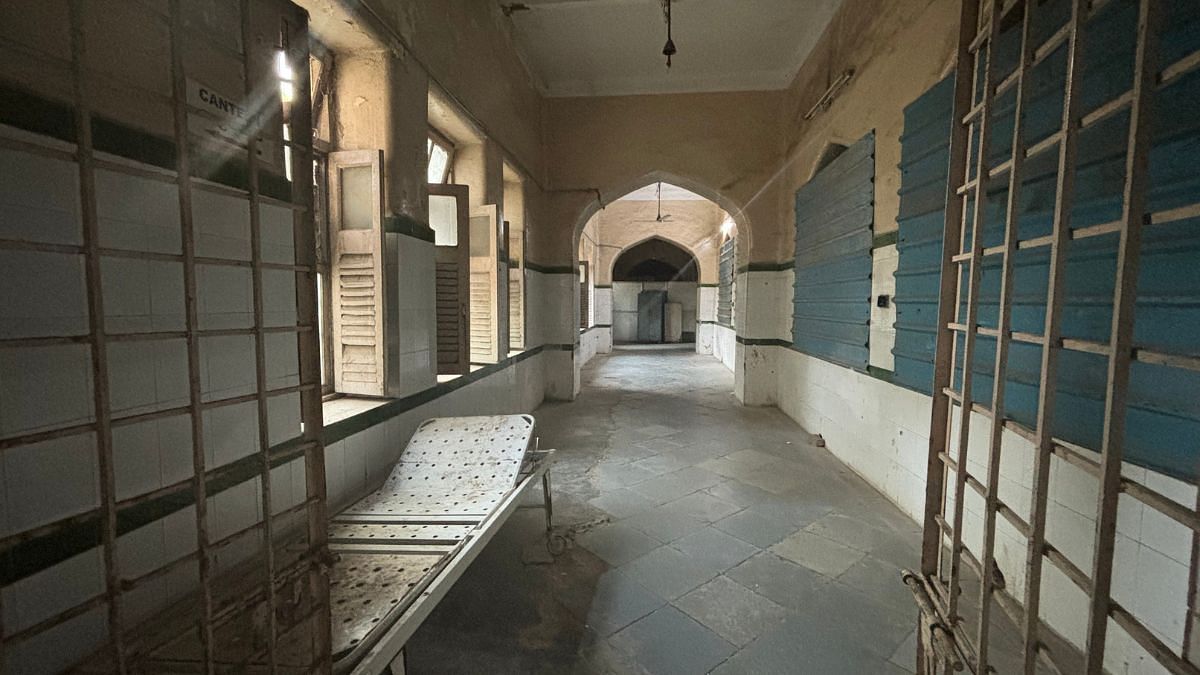
Also read: A Hyderabad company putting Indian cacao beans on world map. With scientists-farmers combo
A frustrating deadlock
“The easiest way to kill a functional space is to turn it into a monument,” Yunus Lasania
There are several conspiracy theories behind the proposed demolition of the Osmania General Hospital.
One camp believes it’s part of a larger medical nexus to draw more patients to private hospitals in the area. Another believes the hospital premises — one of the last remaining large campuses in cramped Old City — could be used to build a fun fair for tourists. There’s also the allegation of real estate vultures eyeing its price potential.
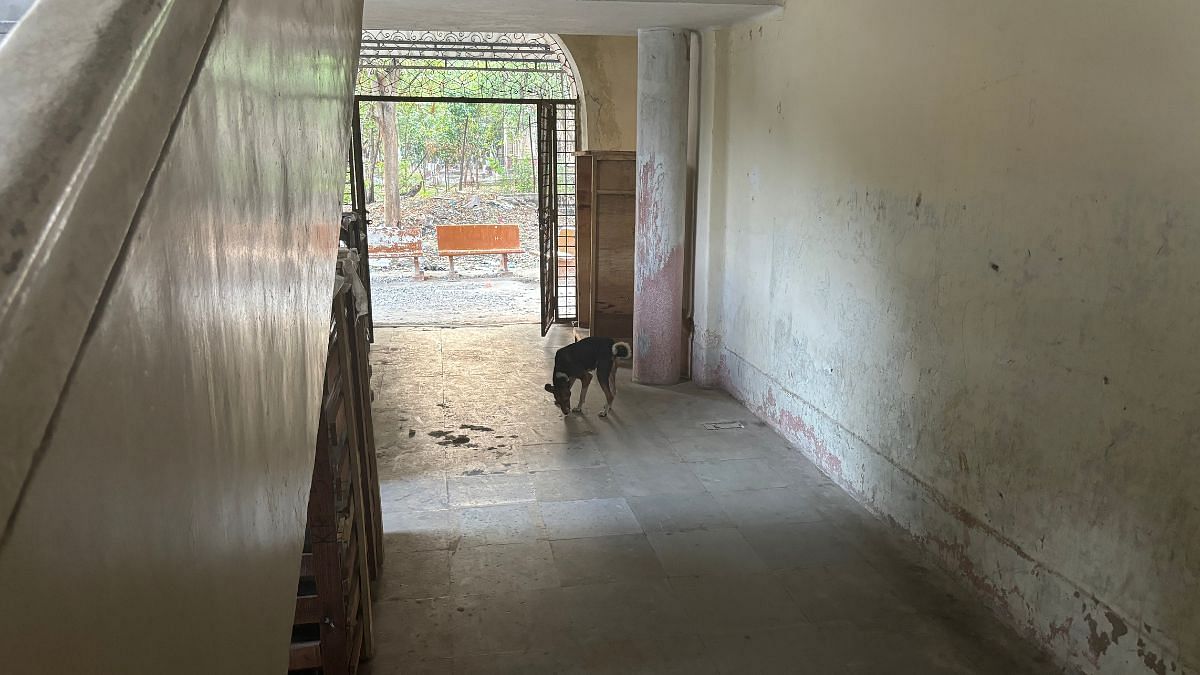
But the undeniable fact is that the Osmania hospital is showing its age.
Vines peak out of patchwork walls, and birds and beehives have settled inside the building. Broken windows and dusty grills are part of its facade. A dog wanders into the hospital, while discarded furniture and overturned chairs line its empty, eerie corridor. Broken bottles of alcohol are visible on its roof that offers a majestic view of Salar Jung Museum across the river. On a late May evening, the most activity around the old building is at the adjoining mortuary.
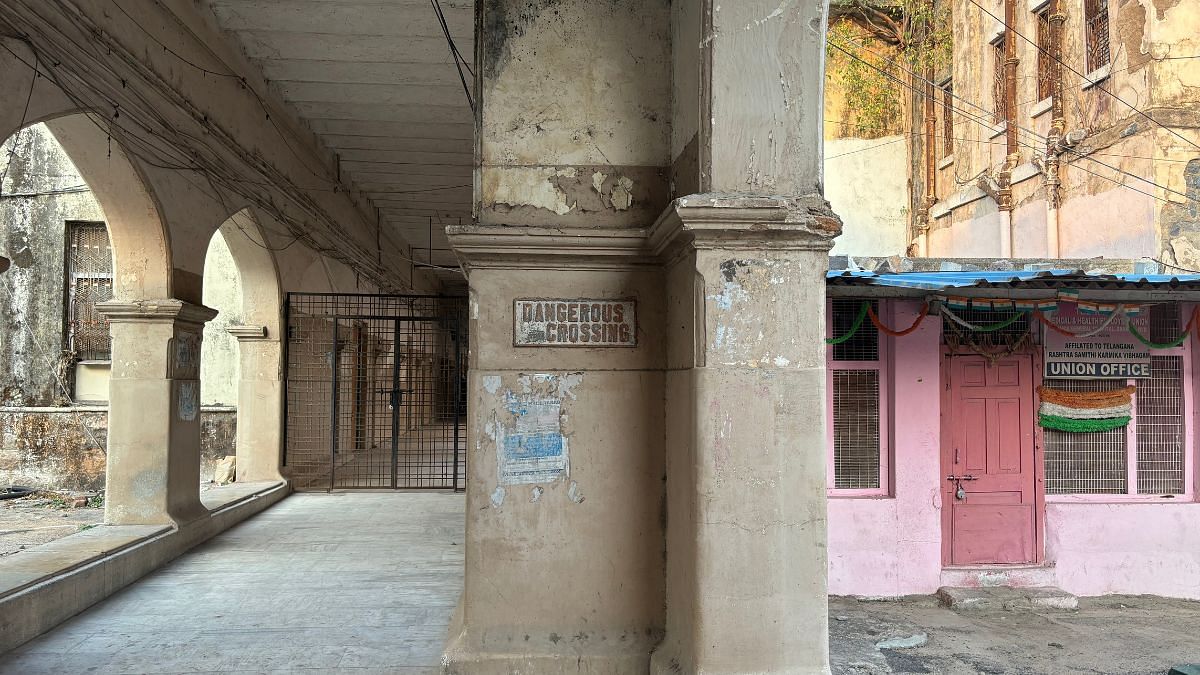
This part of the building, which used to be the inpatient ward, is still in use — but only by heads of departments based there. Most of the building has been cordoned off. Only one entry and exit point is open.
“As a public space, the Osmania General Hospital is a good example of what monuments built for everyday purposes used to look like,” said journalist and historian Yunus Lasania, who regularly conducts heritage walks across Hyderabad. “And it should continue to be used as a public institution, perhaps as a museum. The easiest way to kill a functional space is to turn it into a monument.”
There are multiple opinions involved in the fray. Everyone agrees that doctors need clean, sterile, modern facilities to work in. But there’s also no denying that the hospital is a tangible piece of history, built in a style of architecture that has come to symbolise Hyderabad. Vincent Esch, the British architect who designed the hospital, was also hired by Hyderabad’s Nizam Mir Osman Ali Khan after the Musi floods in 1908 to build structures across the city for public use.
But the hospital has stopped being used in the way it was meant to.
For over a decade, the state government has been considering demolishing the heritage structure due to its age. The question of addressing the Osmania General Hospital’s dilapidated state picked up pace in July 2023. It was when the Bharat Rashtra Samithi (BRS) government filed an affidavit in the Telangana High Court over its demolition. A counter affidavit was filed in September 2023, which proposed demolishing it and building a new hospital in its place with 1,812 beds. In January 2024, the newly-elected Congress government threw its weight behind this plan.
Those advocating for the building’s conservation argue that demolishing it would rob Hyderabad of an important part of its heritage.
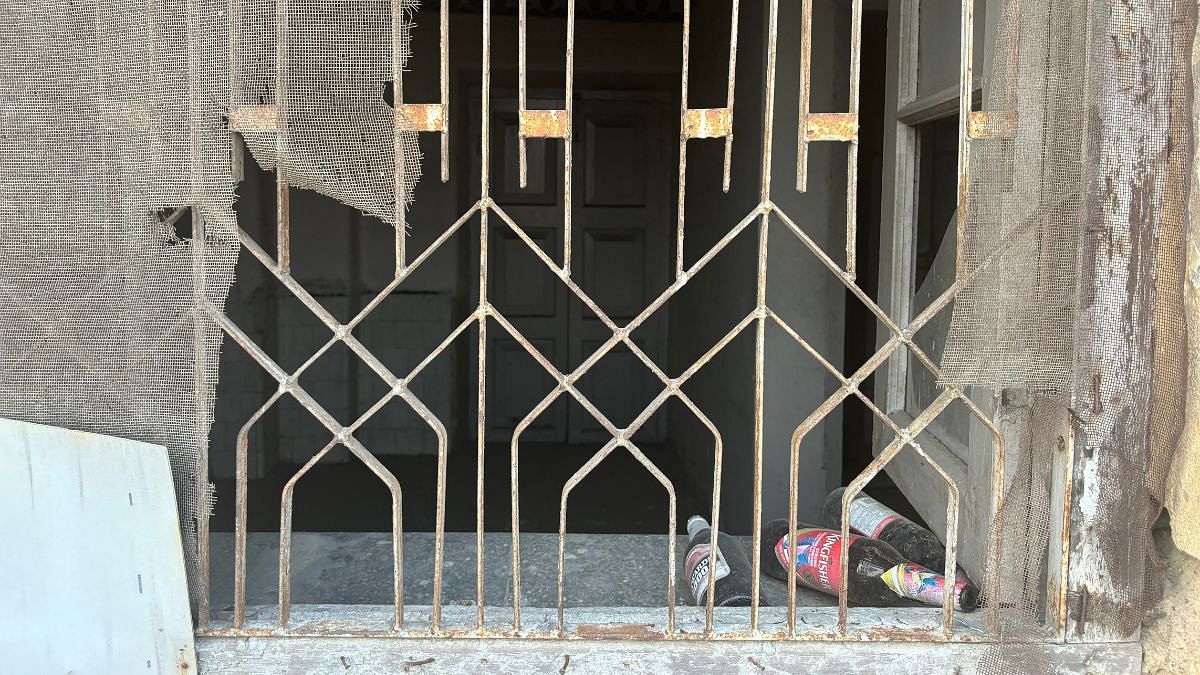
“The public interest to protect the building came into the picture after 2014, when the first plan to demolish it was announced,” said Dr Md. Iqbal Jaweed, who used to work at the hospital. “When INTACH submitted their report, they said the building could last for another 200 years if conserved properly.”
“The most important thing is that the hospital is working. People complain all the time that the Osmania General Hospital is overcrowded,” building caretaker
INTACH submitted a detailed inspection report of the building in 2015. Subsequent rounds of inspection were conducted in 2017 and 2019, but the report remained unchanged as the 2015 findings were found valid.
“The building is in a state of neglect and poor condition of maintenance causing inconvenience to the patients, and doctors. However, the building is structurally sound and can be repaired easily through sensitive conservation methods [sic]”, reads the report. It lists the primary cause of deterioration as water seepage. No major structural cracks were found, besides those caused by the growth of vegetation and its ingress into the building’s roof and walls. INTACH also proposed several recommendations on its conservation.
“It’s still a fully functional building, it needs to be cleaned and water damage in the walls has to be fixed,” said a building caretaker who requested not to be named. “I don’t have any opinion on this building being used like it was before, that is for doctors to decide. The most important thing is that the hospital is working. People complain all the time that the Osmania General Hospital is overcrowded.”
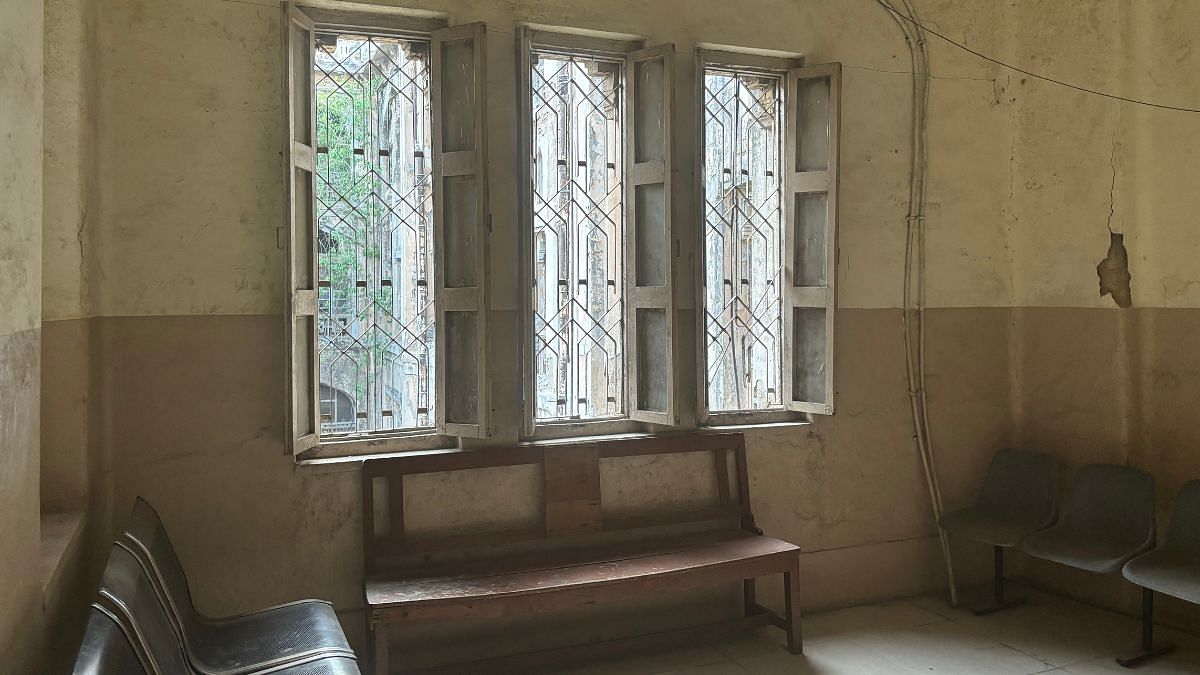
At the meeting on 28 May, Reddy proposed a comprehensive management plan and the adaptive reuse of the building. It can be turned into a museum, while other parts of the complex can continue as the hospital. If the government can move the entire hospital complex to a new site, and if the building can be conserved properly, it could add revenue to the state’s coffers — especially given the considerable footfall at historic monuments in the Old City, said Reddy.
One of the options for a proposed new site is the 40 acres currently occupied by the 139-year-old Chanchalguda jail, which is meant to be shifted to new premises. Hyderabad has successfully pulled off a transplant like this before — the current Gandhi Medical College in Musheerabad was also once a jail.
“Something definitely needs to be done, it’s such an old building that is part of history,” said M Venkatesh, a police constable who was walking across the hospital grounds. “But the problem is getting worse with time.”
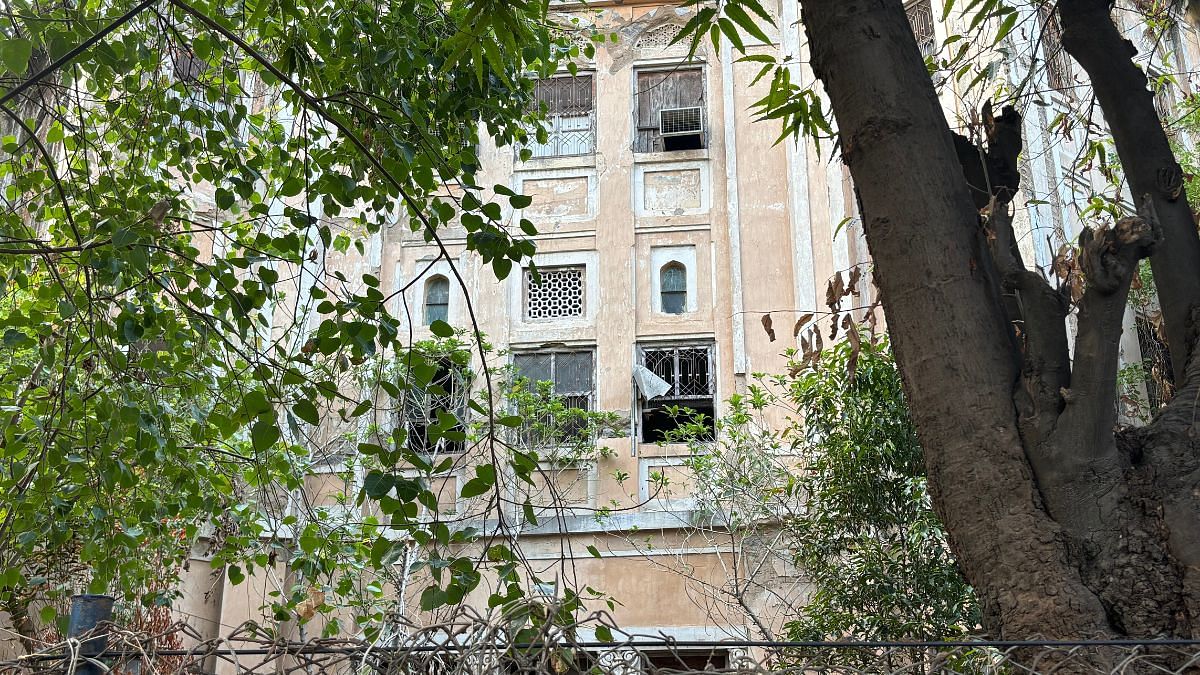
A tangible medical history
Hyderabad is a city with tangible medical history, a fact that Lasania reminds those who come for his heritage walks.
He has conducted hundreds of walks through the Osmania General Hospital complex. This particular tour is a 90-minute walk that starts at the hospital, continues across the Musi River, and ends at the Telangana High Court — the old building in which another the hospital’s fate rests.
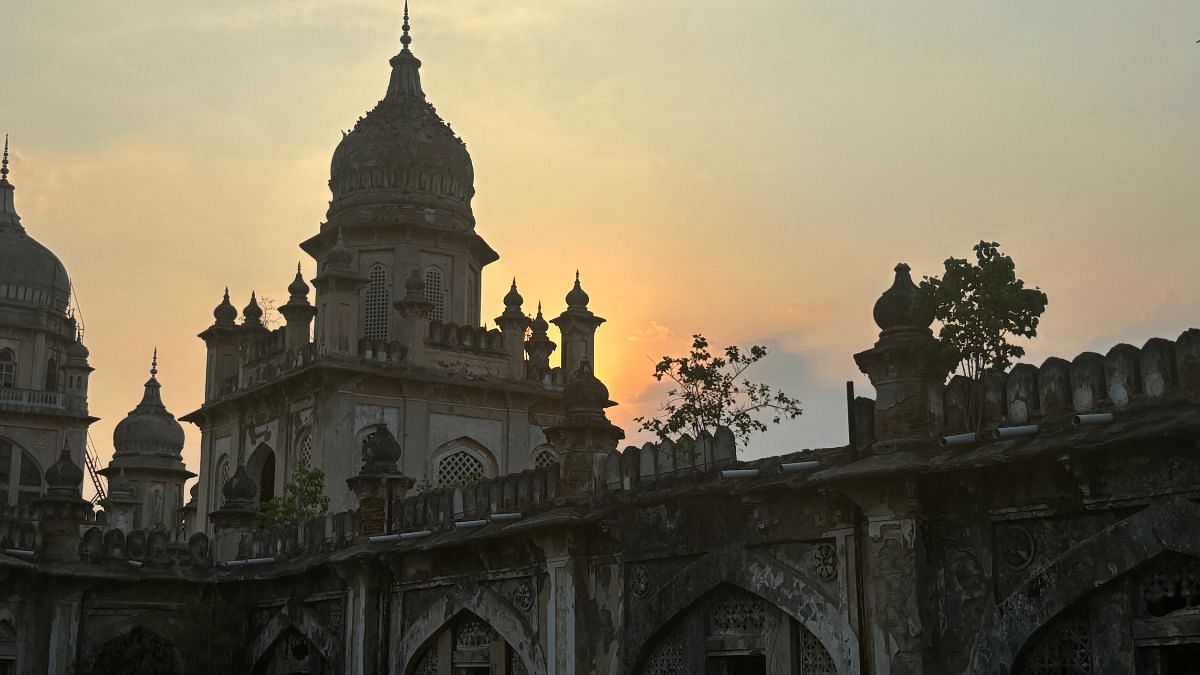
“I tell the people about the ongoing issue, and most think that the building should be conserved — because it’s such a beautiful monument,” said Lasania.
He added that the government doesn’t understand the fact that people appreciate the Osmania General Hospital for what it is—”a piece of history that has contributed to the development of Hyderabad.”
Even before Osmania, Hyderabad was building its medical heritage. In 1595, much before the concept of treating sick people away from their homes became popular, Hyderabad’s founder Quli Qutb Shah laid the foundation for Dar-ul-Shifa in what is now the Old City. Literally translated as “house of health,” Dar-ul-Shifa was the first hospital in the area. It was decades before the East India Company built what is now the Rajiv Gandhi Government General Hospital in Chennai in 1664. But Dar-ul-Shifa doesn’t stand today — instead it’s been turned into an ashurkhana, a place for mourning.
But the Osmania General Hospital ostensibly changed Hyderabad’s medical history, spearheading modern medical care in the region.
During the Covid-19 pandemic, the hospital — which has a capacity of around 1,500 beds — was sealed.
The hospital itself is an institution that’s over 150 years old. It was set up in 1886 but rebuilt in 1919 after floods destroyed the structure in 1908. In 1925, it got its name. The hospital was designed to specifically address the needs of the community, with around 14 peripheral specialist hospitals under its umbrella spread across the city. The system thus became one of the biggest medical complexes in India at the time — a proposal was even floated in 1962 to upgrade it to an All India Institute of Medical Sciences (AIIMS) facility, but the process was halted.
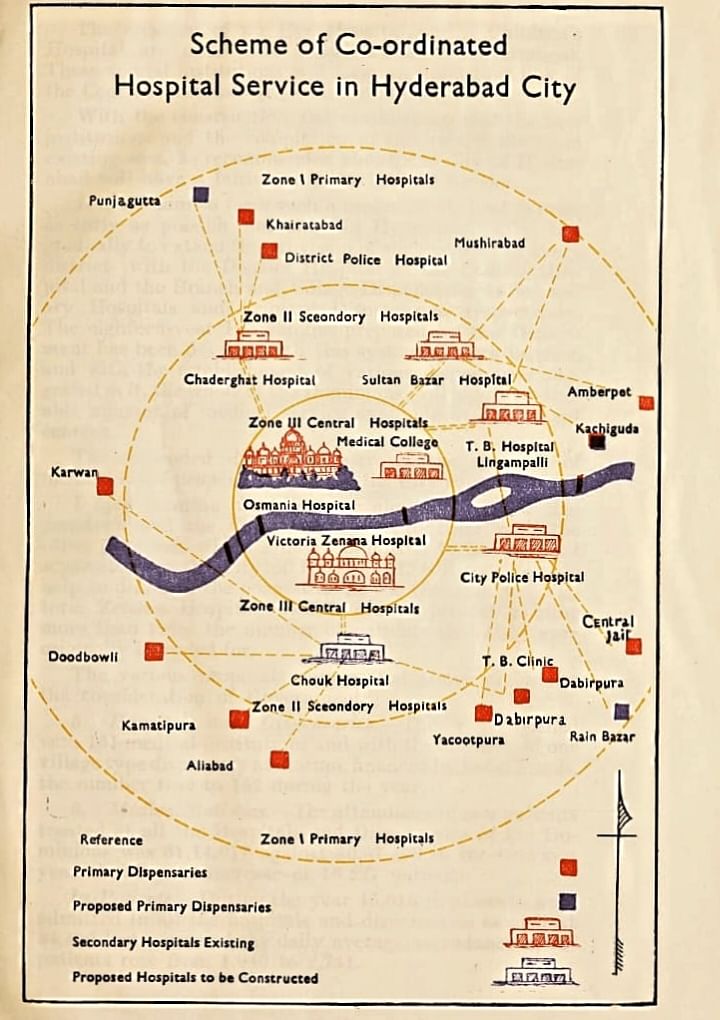
The Osmania General Hospital is spread across nearly 30 acres, with the heritage building confined to three acres. Over the decades, as private hospitals began to flourish and the medical sector grew, the Osmania General Hospital complex fell into disrepair. While a newer complex came up, the heritage part of the building was not maintained well. During the Covid-19 pandemic, the hospital — which has a capacity of around 1,500 beds — was sealed.
The reason cited was flooding; however, the building caretaker, Reddy, and Dr Jaweed said that the flooding occurred because drains outside the hospital were blocked, not due to roof leaks.
“The original hospital is designed beautifully in such a way that waste and water would naturally flow into the Musi River, but a disturbance to the drainage system created flooding,” said Reddy. “Osmania hospital was not meant to be a single hospital like this, it was decentralised with several layers of medical help across erstwhile Hyderabad state. Today they’re throwing up their hands and saying they don’t know how to use the space.”
She pointed to facilities such as the Victoria Zenana, a maternity hospital right across the Musi River and part of the Osmania General Hospital’s larger complex. Part of it was demolished and turned into a parking lot. A sanatorium originally meant to treat tuberculosis was also closed. As a result, the main hospital building became overused and overburdened, and the private sector stepped in to fill the gap. And the old building was not maintained well as the city changed around it.
“The skyline of the Old City — including the High Court, Osmania General Hospital, the Salar Jung Museum, the state library— all this is part of the heritage zone around the Musi River, and we are asking that it shouldn’t be disturbed,” said Dr Jaweed.
Also read: Haryana’s bought brides are fighting back. ‘Why bring us from outside and insult us?’
Possible ways forward
“The people are tired of the back-and-forth and fed up with local politicians,” Dr Jaweed
Dr Jaweed has spent almost his entire life in and around the Osmania General Hospital. He was born there, studied there, and worked there. His father, who was president of the Indian Medical Association Andhra Pradesh, had quarters inside the complex. The fight for the hospital building’s conservation is personal for him.
It’s not only about depriving the city of its history, but also depriving the city’s citizens of a hospital, according to Jaweed. He dismisses the claims of politicians like BRS’ K Chandrashekar Rao and All India Majlis-e-Ittehadul Muslimeen’s (AIMIM) Asaduddin Owaisi, who say that the hospital is unsafe and that saving lives is more important than saving heritage.
“Osmania is now becoming a bhoot bangla (haunted house),” said Dr Jaweed. “There’s no question about it not being a functional hospital. It only needs to be maintained properly.”
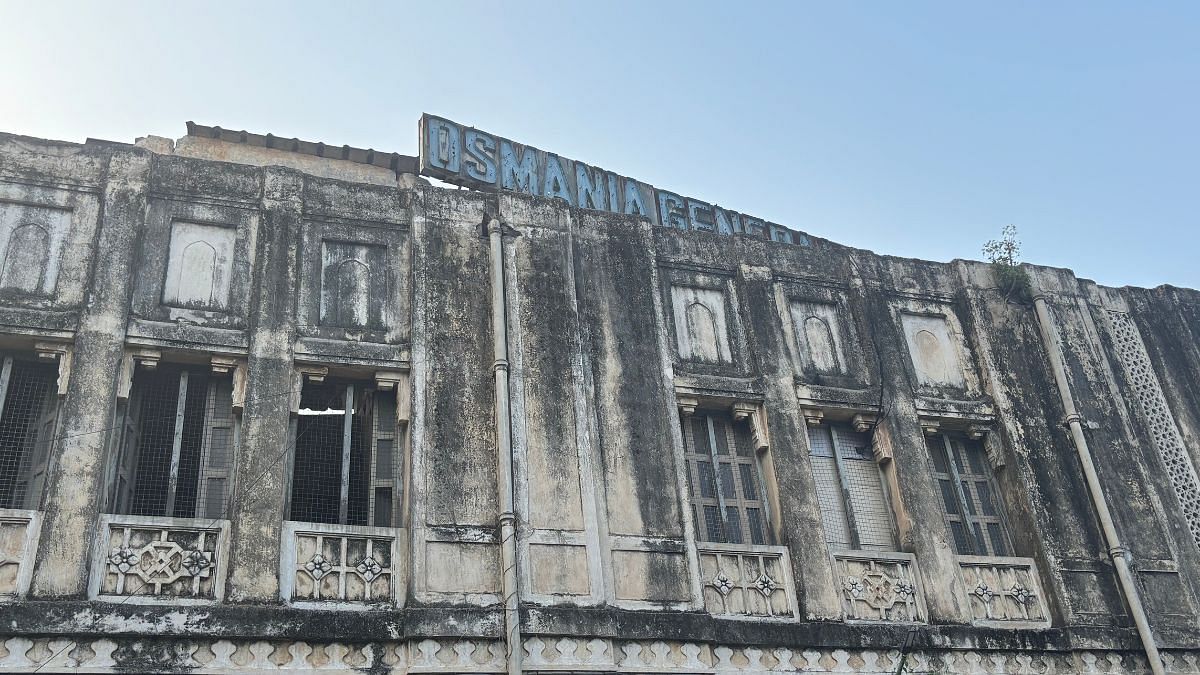
The hospital superintendent, Dr B Nagendar, underscored the fact that the current space isn’t enough to meet the growing needs of the hospital. During a presentation at the meeting, he highlighted the need for additional land and addressed issues stemming from a shortage of space and beds, which also makes it difficult for medical students to attend practical classes.
If the Telangana High Court rules in favour of conserving the heritage building, the Telangana Government Doctors’ Association proposes moving the hospital building somewhere else.
Two potential locations were suggested: either the Chanchalguda Jail premises and the Government Printing Press, which is about 40 acres of land, or the Goshamahal Police Stadium and police complex, which is around 30 acres of land.
Reddy, who said she was speaking at the meeting as an owner-citizen of the Osmania General Hospital, made her case for why the building should be conserved, offering INTACH’s help in the process.
“If one looks at our monuments which have survived centuries when compared to the cement blocks of today, it begs the question of how these structures have survived in spite of neglect. Except for a handful, people don’t understand the value of its history,” she said.
Dr Jaweed is more vehement about the real estate value of the land, and the potential reason why the state government and politicians might be dragging their feet on the issue.
“The people are tired of the back-and-forth and fed up with local politicians,” he said. “The new lords of Old City want their names on buildings to carry their legacy, not the legacy of Osmania.”
He forwards a photo of the hospital on WhatsApp, with the words “I am alive and can save your lives for 100 years, don’t bury me.”
(Edited by Ratan Priya)



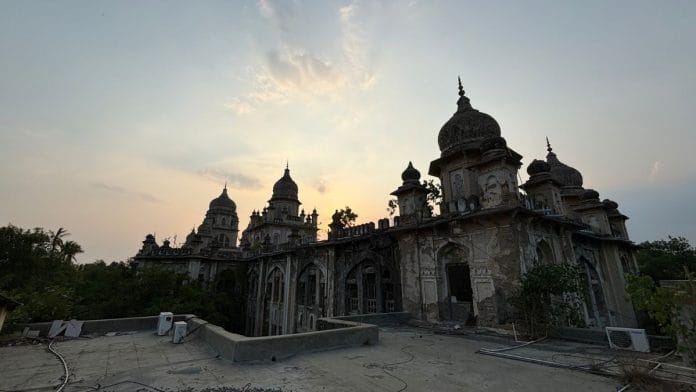



in a country if 500 yrs. old masjid can be demolished, what is OGH which is just 100+ yrs. old??? ogh serves many people each day and its a must for many middle and lower income people… and anything for the benefit & safety of the people to be demolished to reconstruct it, is quite fine. existing building is old and poses a threat always due to heavy downpours….